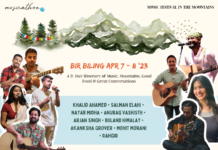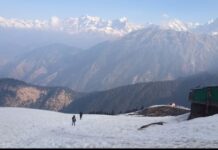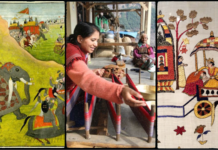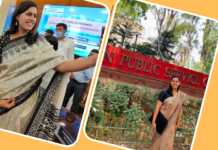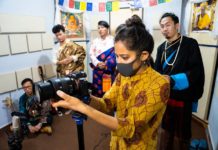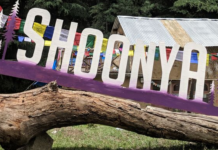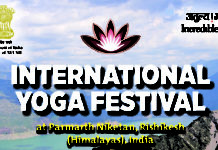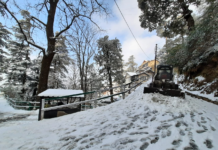It takes three buses to make the 17 mile trip to Sauraha, Nepal. From where I’m staying every passing bus is headed towards Bharatpur, my first stop. So there’s no need to ask for destinations, just hop on.
Sauraha is famous for being the gateway to Chitwan National Park. This is where you might ride an elephant or spot a rhino. I planned to spend the day there for Jitiya, a Tharu holiday. The Tharu is one ethnic group of Nepal, indigenous to the Terai, a sweltering jungle and my new home. Jitiya is their version of Teej, a celebration for women to rejoice, dance, sing and fast.
The approaching bus was larger than usual. It was a 1970s retrofitted hippy van, with a circular Austin Powers couch in front by the driver. I was easily the tallest person on the packed bus, so I stood in the aisle with my head cocked at a 45 degree angle to combat the low ceiling.
After the first ride, I walked to the highway. The second bus I waved down was headed to Sauraha. I also scored a front row seat. I felt lucky. After squeezing out of the small city’s traffic, we drove above flowing rivers on high bridges then passed wooded patches and agricultural fields. This was my first time taking this route and it was spectacular.
On buses in Nepal there is a driver of course, but there is also a conductor of sorts. He collects fares, hangs out the door to shout destinations at potential riders, and most importantly, lets the ignorant know when to get off. He thankfully informed me I had arrived, and pointed down the road towards Sauraha.
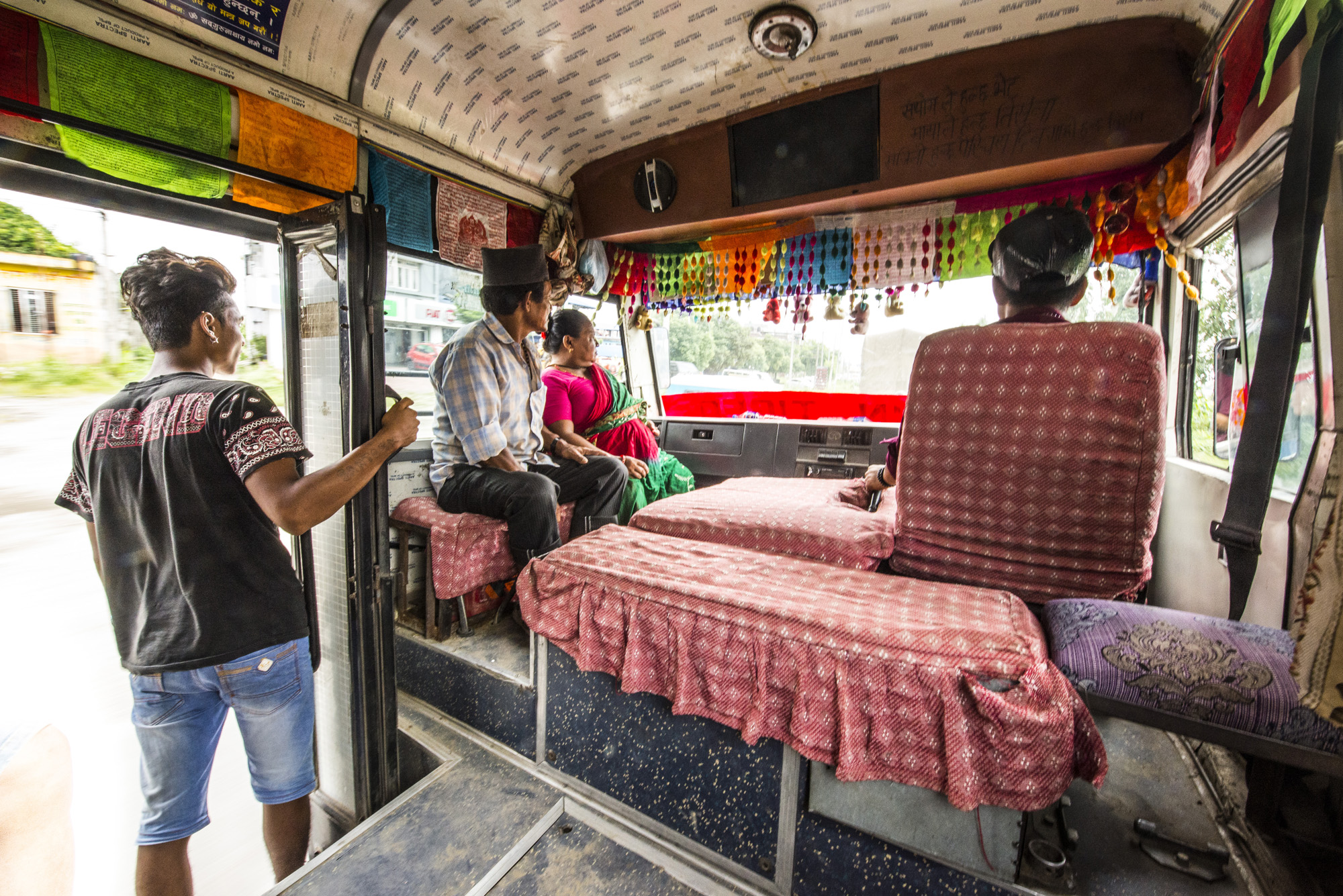
On the last ride I wasn’t so lucky. The clunky bus curved leisurely through open fields, some with teams of children playing tag. I saw a circle of elegantly dressed women dancing on a rock platform near the river below. I knew I was close. The fear of missing an image struck the pit of my stomach when the bus didn’t stop. I should’ve listened because when I checked my phone again I was halfway to the next town. I had been spoiled by each conductors’ individual attention. My fate was in their hands.
I asked the driver to stop and hoofed back near the center of Sauraha, but I didn’t know exactly what to look for. I mostly wanted my camera to lead the way. The matriarch of the family I’m staying with said there would be flocks of tourists and ladies, but the streets were empty, save a few kids smiling and asking for chocolates.
I saw signs for the Tharu Cultural Museum, and followed them. There were trees overhead, fields and adobe colored lakes to my sides. I felt my arms and cheeks begin to burn. The sun and humidity strikes hard when my attention isn’t stolen by photographic pursuits.
It was the time of day when most conversations went like this:
Person – “Namaste”
Me – “Namaste”
Person – “It’s hot.”
Me – “Yes, so hot”
In this instance the man added, “Especially for you people.” I had no energy for comedy so I simply smiled, but in my mind I was thinking, “You people?”
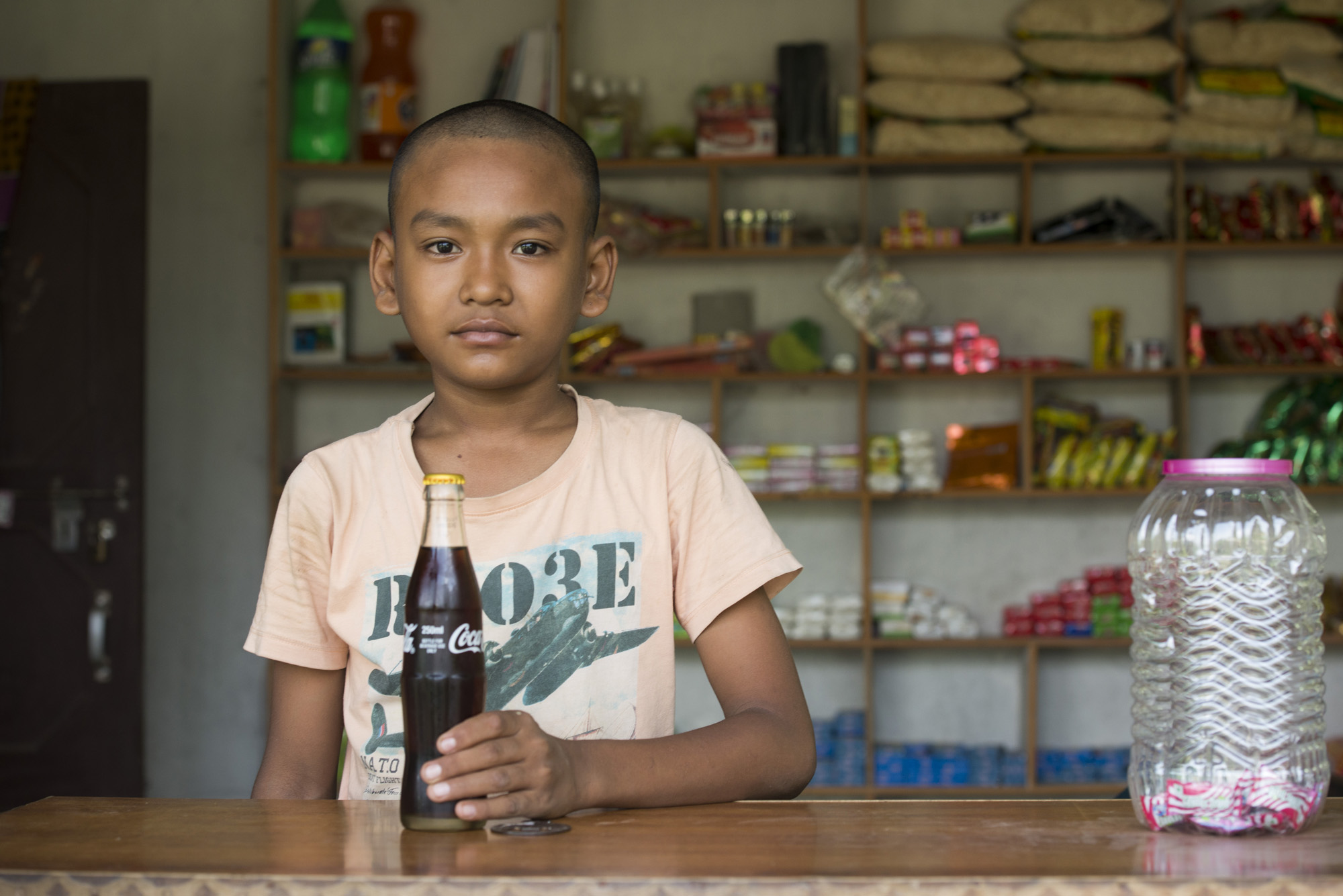
The map said I was close, but the Southeast Asian sun demanded I drink something first. I stopped at a doorless, one-room shop and asked for a cold water. The boy said he only had Coke, and my smacking dry mouth accepted. He smiled at me and plainly said the words, “Summer day.”
A group of women pointed me to the museum, and a young girl at the entrance took my 50 rupee entry fee. The museum is a large cavernous room filled with statues, maps and placards describing Tharu culture. There are sections on Brahmha (the god of creation, and his embodiment in local trees), at-home, childbirth, arranged marriages, decorations, funerals, dances and the holiday Jitiya.
“Teej, which is called a Jitiya Pawani, is a major festival where Tharu women fasts and bathe in the rivers nearby their village. All women get dressed in new clothes and sing in their own local dialect while dancing in a circular motion,” I read on a plaque.
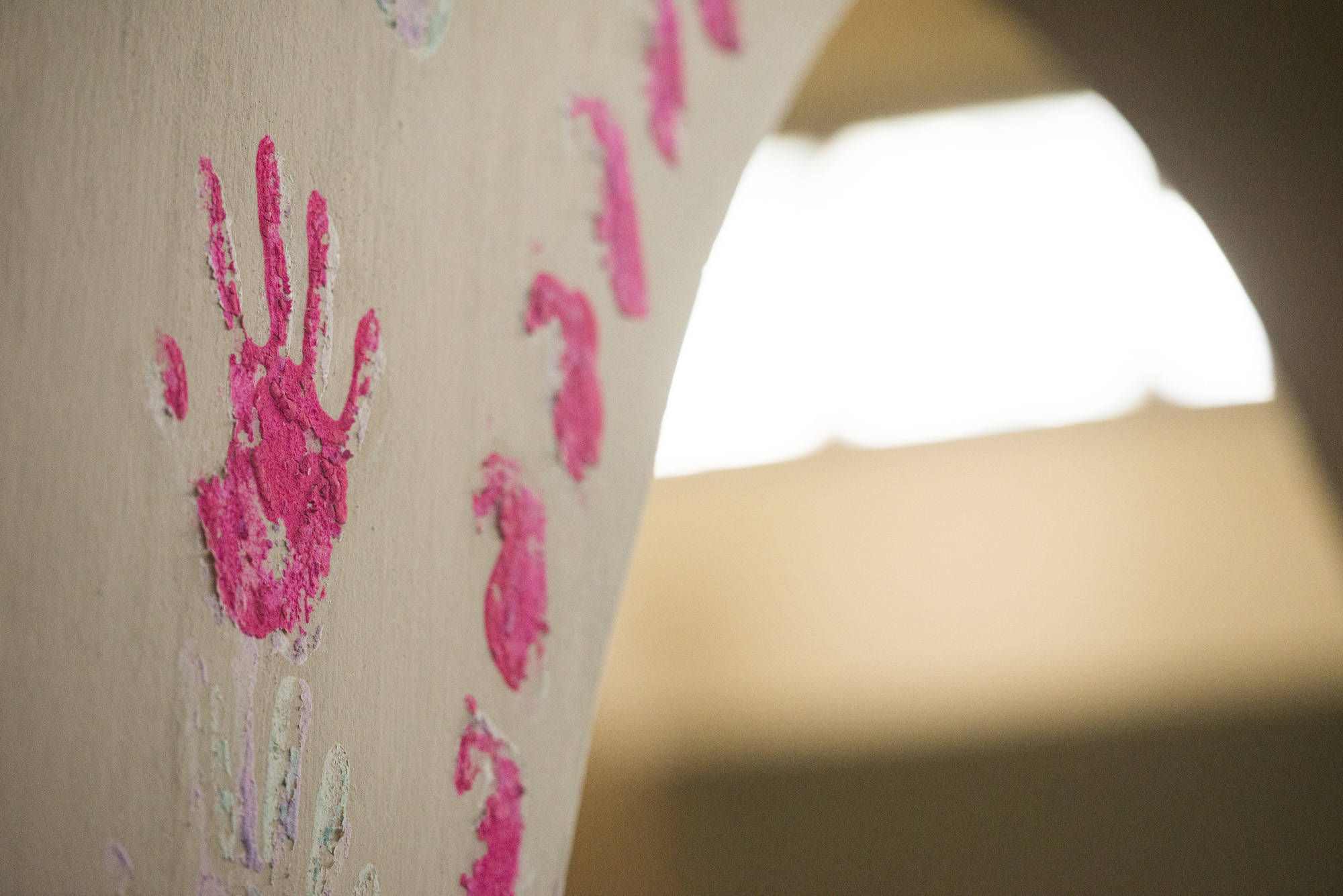
I was anxious to see this for myself. As I left the museum in search of the festivities, I noticed the beautiful decorations around the front side of the building. Many Tharu homes are adorned with hand prints and flowers for good luck and a productive crop yield. It’s like if Georgia O’Keeffe was commissioned to decorate a preschool classroom.
I continued past the soda shop and was near the road I began on again, this time with a sweat-soaked shirt and mild sunburn. I was discouraged and walked slowly.
I squinted at the horizon and saw a patch of colors. I began to recognize the shapes as women with colorful umbrellas headed towards me. Their clothing was vibrant, full of green, red and blue. There were young girls walking in front of them, equally dressed up like tiny versions of themselves. I photographed a cheerful youngster under her umbrella and she said, “Smile…smile” as she walked along the path. I shared a smile with the adults accompanying her. The innocence and happiness of children tie all people.
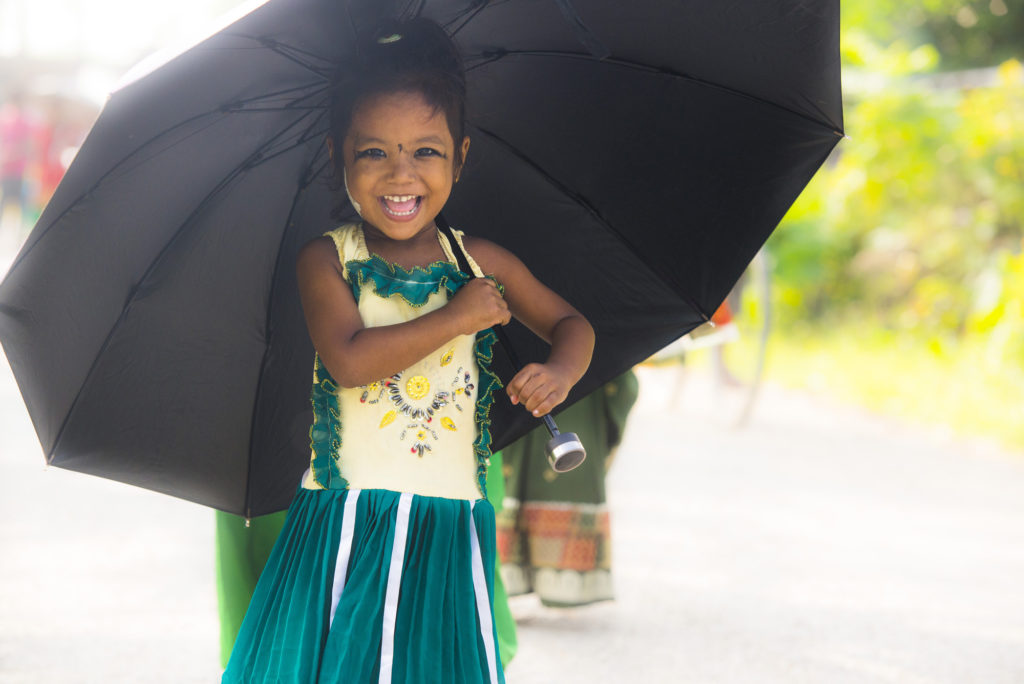
The procession of women totaled to about 35. I asked one of the last to pass where they were all going.
“Yes come,” she responded.
There’s no arguing with that. It was wonderful to be included. I followed them to a shaded clearing where they waited for others to catch up. On the outskirts of the vibrant congregation were little boys in street clothes. They either clung to their mothers or ran around whacking each other with sticks.
One boy immediately came over to exchange names. When I tried to pronounce his name he said it sounded sweet coming from my face. This young man, Bijess, immediately became my partner and answered any questions I had about the procession.
We continued to walk until we reached a large dirt area between houses where a group was already dancing. The women I was walking with went to rest in the shade and wait for their turn. I ducked under a clothesline and was immediately engrossed by the circling dancers and their high pitched singing.
The music started with a unified clap. The footwork seemed simple, but the penetrating melodies were hypnotizing. It didn’t sound like the shrillness of a child. Even the highest note was soothing and gentle. They repeated the vocal lines together and occasionally bent at the waist while they spun.
As I watched them orbit, I imagined generations of women teaching this dance. I thought of the amount of culture passed on between people. No matter the advances in technology, it is possible to keep the important things alive. A young girl entered the center of the dance and recorded the action with her smart phone.
After another round of dancing, the caravan continued down the road. The song stayed with the group as they traveled. Bijess told me we were meeting up with more villages. The assemblage filled the entire road and motorists struggled to get through. Blaring horns were a dreadful juxtaposition to their enchanting voices.
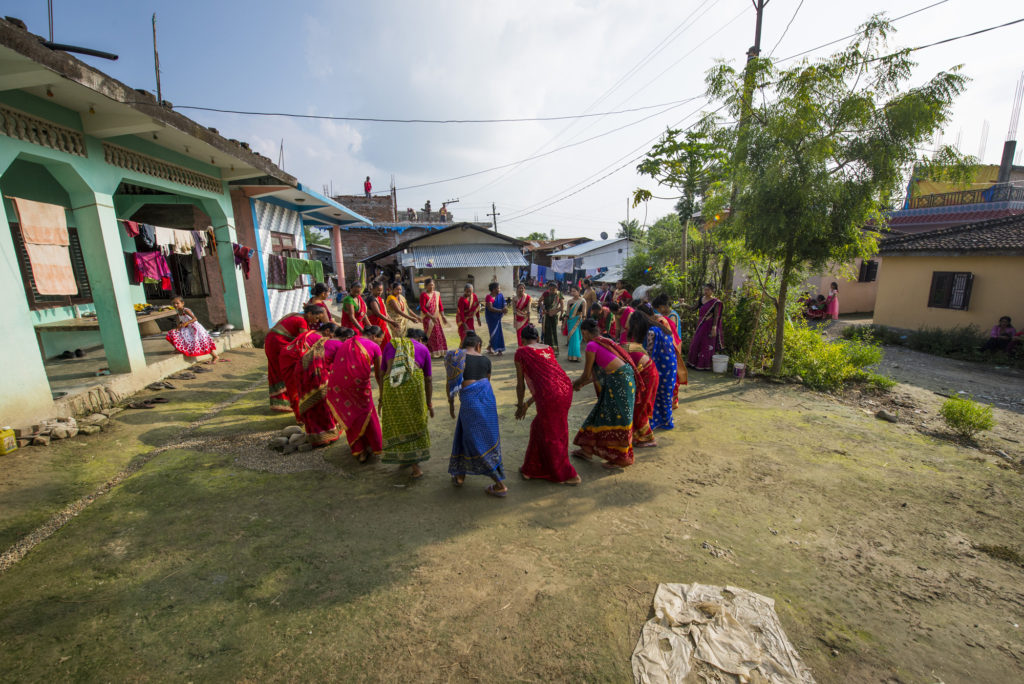
We stopped and turned towards a seemingly empty field, but within minutes it turned into a scene from “The Warriors”, but instead of “The Rogues” and “The Baseball Furies” coming out to play, it was streams of neighboring women ready to sing and worship.
I found the straightforward kinship between bordering communities beautiful. One more collection joined us from ahead. They immediately mixed and we continued to a minimal stone altar surrounded by trees.
They took turns circling the altar. They poured water on their hands and on a collection of rocks below, then threw rice and leaves. I was on the street with those who were waiting or finished. I asked if I could photograph this, and fortunately they said yes.
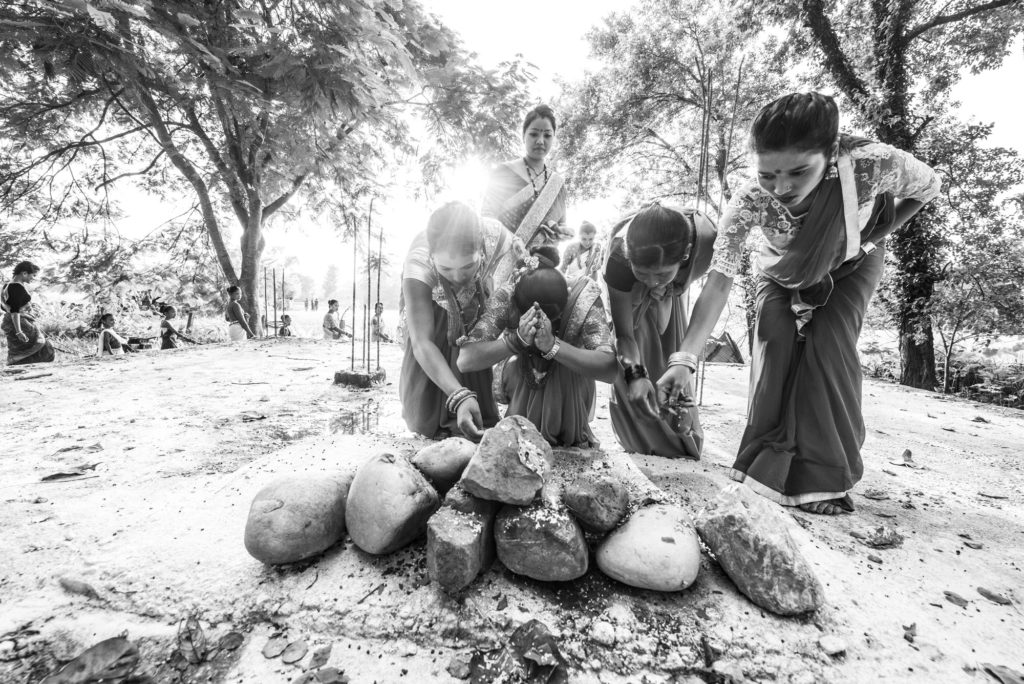
I hopped up on the rocks and sat to get some low angle shots. I was sharing the space with another boy taking phone videos. I was absolutely elated being a fly on the wall, my typical temperament.
“Please remove your sandal,” the boy said to me.
I was caught up in the moment and it didn’t immediately click. Thankfully the woman who sent the message with the boy was pantomiming shoe removal. I plopped my shoes off immediately and apologized. She smiled and all was well. As a photojournalist I never want to be noticed, especially during a religious event.
I sat back down and was joined by three highly interested boys. They sat on my lap, looked through my camera, and one fiddled with my arm and beard hairs as I worked. I’ve always felt comfortable with children, but the children of Nepal feel comfortable with you. They are adored here. On buses, any lap could be the seat for a little one. Childcare is a group effort. I’m often reminded of the maxim “it takes a village.”
When everyone was finished with their ritual they converged. They sat on the side of the road overlooking fields, a pond with ducks and the vast sky. They sang together one more time then sat in serene silence. I closed my eyes for a moment and felt the energy.
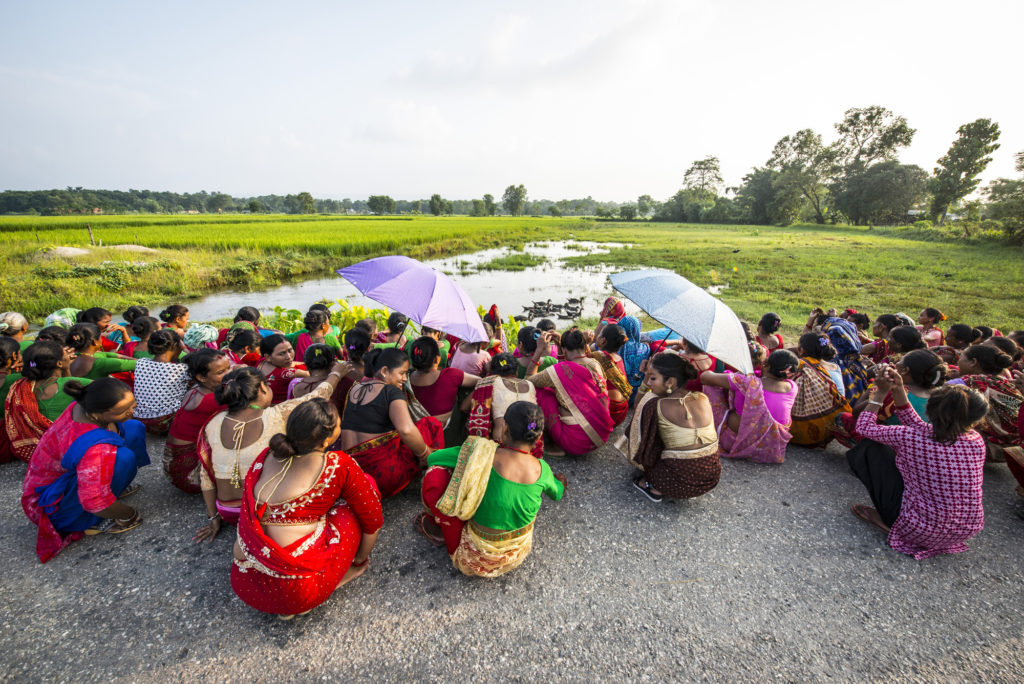
The peace continued as they rose from the ground and parted to their respective communities. They might have different villages or different dialects, but they are one beautiful people.
On the way back, most of the women picked up a melon from a market, and some skillfully balanced it on their heads. They continued to a well where some drank, and others left with large branches a man freshly cut for them. Bijess told me this was for pujas (prayers).
We crossed the street and they started the dance again. As I parted they were still circling, their voices in my head the entire way home.


